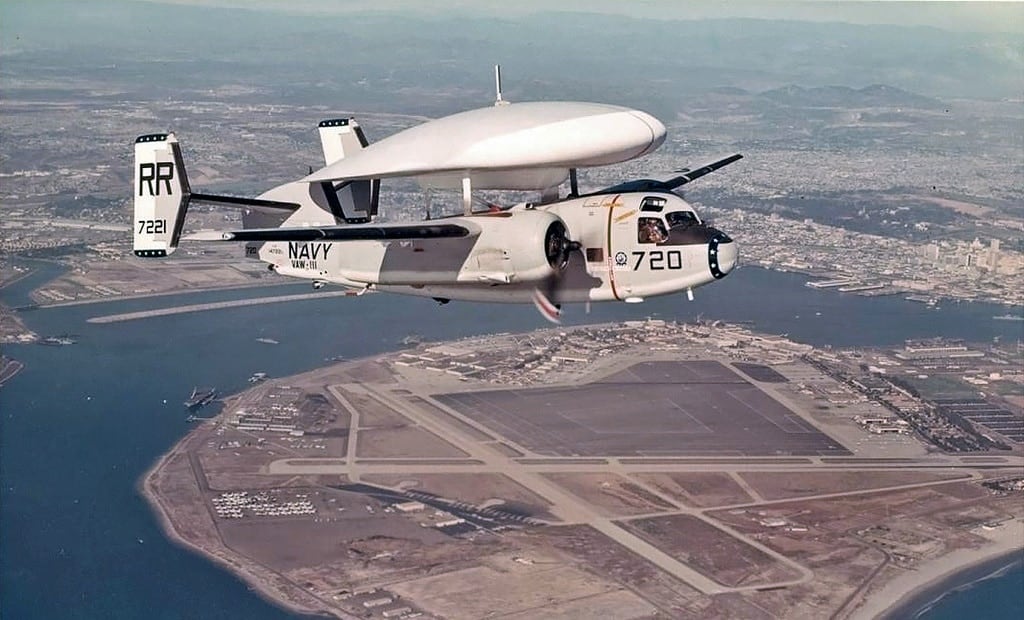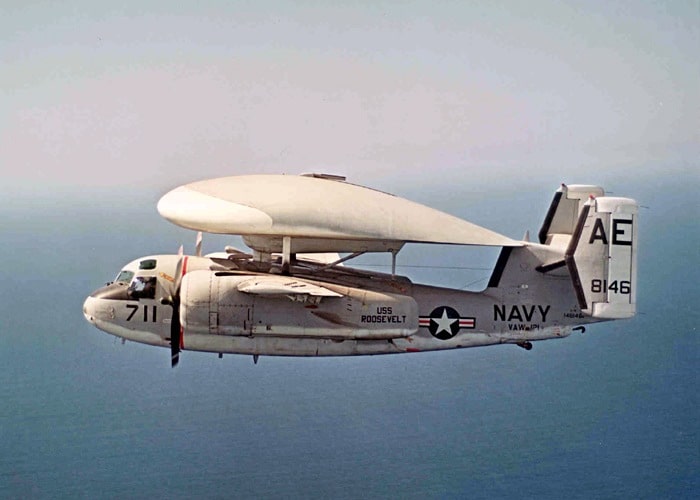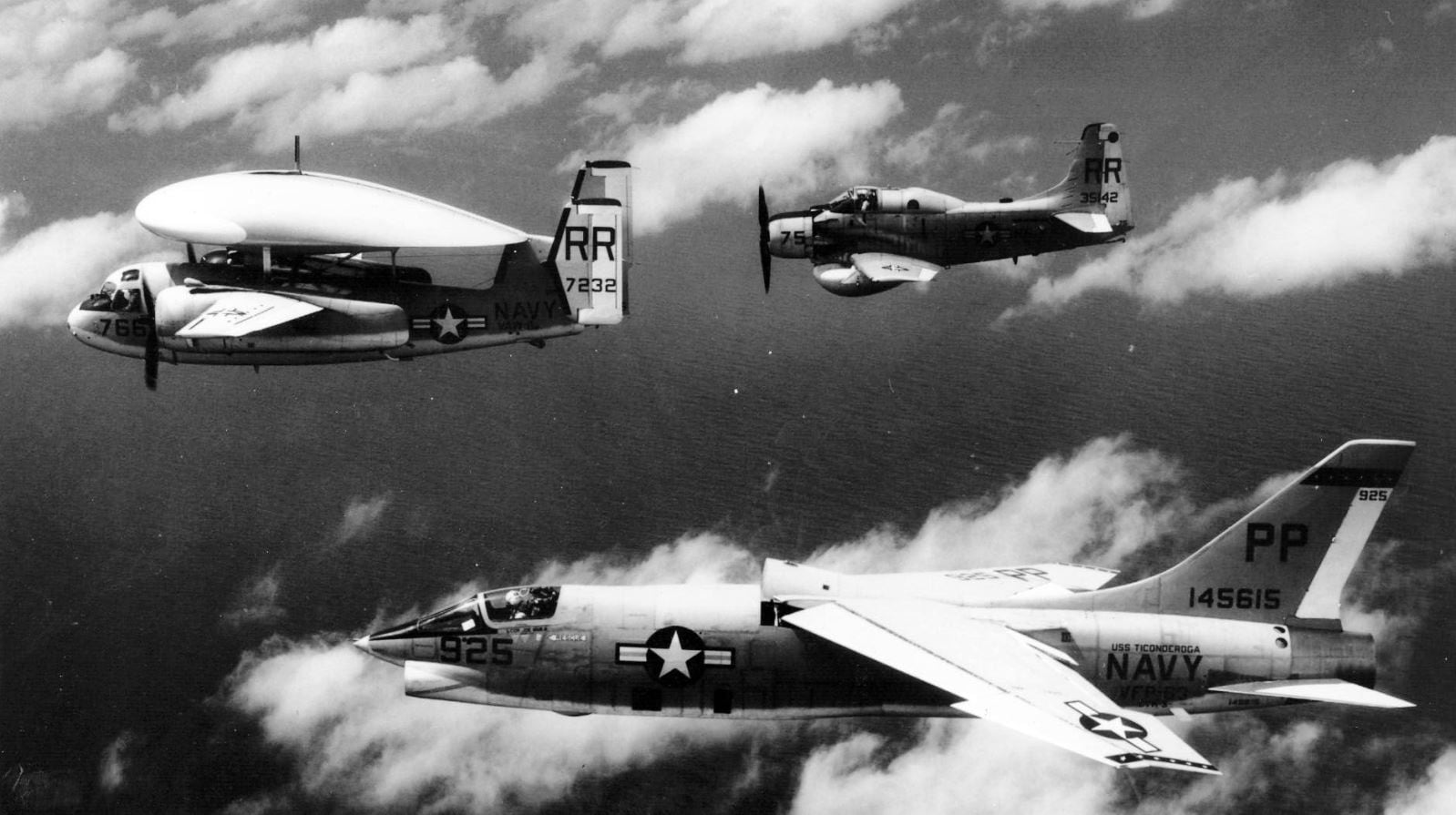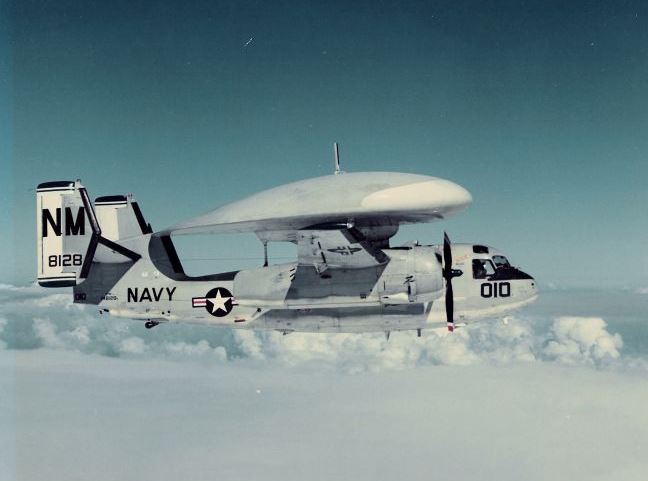There’s Magic in That Roof
The Navy finally had a real live capable carrier-based AEW/AIC aircraft. With a circular search range of 250 to 300 miles (depending on scanner altitude) and capable or prosecuting up to four simultaneous intercepts via a pair of large display screens, the Tracer was a quantum leap ahead in the Fleet protection business.
The WF-2 was capable of contact height determination, of shaking out surface or airborne targets from background clutter via the Airborne Moving Target Indicator (AMTI), and of tracking airborne tankers and vectoring thirsty jets to them and those same jets to their targets.
WF-2s could also direct search and rescue (SAR) efforts and share the radar “picture” to the carrier via an early form of datalink, making modern fleet situational awareness much sharper. Tracers were equipped with all manner of radios and encrypted communications equipment allowing them to talk to the entire fleet and every aircraft over it.

Going Boating
Willy Fudds deployed aboard all carrier types, large or small, attack or antisubmarine warfare, during their service years. For several of those years carrier air wings (CVWs) included several different types of Skyraider-based AEW and electronic warfare variants along with WF-2s. After thorough testing and evaluation to ensure the capabilities of this new aircraft were what was expected and needed, the type entered fleet service in 1958 and deployed aboard a carrier for the first time when VAW-11 Early Elevens sent their Detachment D to sea aboard the Essex-class carrier USS Hancock (CVA-19) in August of 1959. After the Fleet-wide aircraft designation changes of September 1962, the WF-2 Tracer became the E-1B Tracer.

A Consummate Team Player
E-1B Tracers with VAW-12 Bats were in the thick of the Cuban Missile Crisis aboard the Essex-class carriers USS Essex (CVA-9) and USS Randolph (CVA-15) as well as the Forrestal-class carrier USS Independence (CVA-62) and the at-the-time newly commissioned USS Enterprise (CVAN-65). Carrier air wings (CVWs) deploying aboard attack carriers usually included a detachment of three E-1Bs. Antisubmarine Air Groups (CVSGs) deployed aboard the straight deck Essex-class antisubmarine carriers also brought E-1Bs aboard. Aboard the ASW carriers the E-1Bs were used to help S-2 Trackers with target prosecution, to triangulate radar contacts, and communicate with the other aircraft and rotorcraft involved in tracking targets.

Earning Accolades on Yankee Station
The war in Vietnam was the pinnacle of the Tracer’s service in the Fleet. Willy Fudds deployed a total of 56 times aboard attack carriers steaming in the Tonkin Gulf. The number of lives saved by those E-1B crews is incalculable, but save lives they surely did. Whether they were directing SAR efforts, providing warnings of MiG activity or ground movement, or vectoring damaged outbound aircraft to tankers so they could get back to their carriers, the work of the Tracer was critically important. Even though Grumman’s replacement for the Tracer, the Grumman E-2A Hawkeye began replacing the E-1B Tracer in 1966 and saw service in Vietnam, the E-1B continued to serve for another 11 years.

Long Road to Retirement With a Respectable Legacy
Eventually the Stoof with a Roof equipped a total of ten active and Navy Reserve squadrons based at NAS North Island in California, NAS Norfolk in Virginia, NAS Agana in Guam, and NAS Quonset Point in Rhode Island. As their service continued and avionics technology improved, the 88 Tracers Grumman built for the Navy gained weight along with capability in the form of new avionics and communications equipment.
It wasn’t until 1977 that the last operational Willie Fudds deployment was made by RVAW-110 Firebirds during a Mediterranean Sea deployment aboard the Midway-class carrier USS Franklin D. Roosevelt (CVA-41). VAW-78 Fighting Escargots was the last squadron to operate the E-1B, retiring their Tracers on 19 November 1977 and bringing the Willie Fudds’s 19 years of service to a close. The WF-2/E-1B Tracer/Willy Fudd/Flying Turtle/Stoof with a Roof was the first aircraft built specifically for the carrier-based AEW/AIC role- still a very exclusive club.

